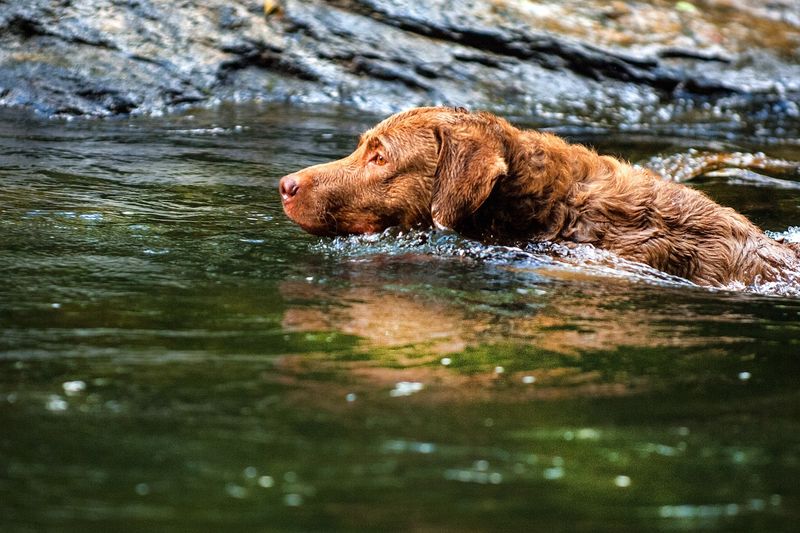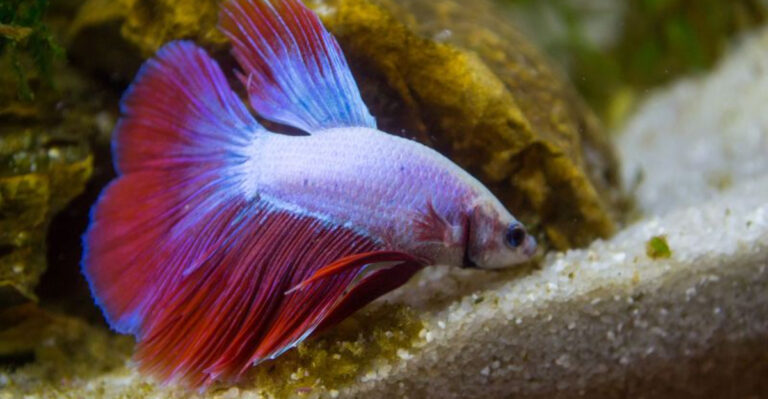Battle Of The Retrievers: 13 Key Comparisons Between The Chesapeake Bay And Labrador

Ever wondered how two of the most popular retrievers stack up? The Chesapeake Bay and Labrador Retrievers are beloved for different reasons, and today, we’re diving into what makes each one special.
From their origins to their unique personalities, join us as we explore some fascinating comparisons. Whether you’re a dog lover or just curious, this guide will give you insights into these remarkable breeds.
1. Origins And History

Let’s take a stroll down memory lane. The Chesapeake Bay Retriever, born in the 1800s on Maryland’s shores, was bred for rugged endurance and resilience in icy waters.
Meanwhile, our friend the Labrador hails from Newfoundland, known for its fishing skills. Both breeds share a maritime history but diverged to specialize in unique tasks.
2. Size And Build

The Chesapeake’s robust frame is like a sturdy oak, built for strength and durability. Its dense, waterproof coat is perfect for chilly water. On the other hand, Labradors are slightly more streamlined and agile, with a playful bounce in their step.
Both dogs are athletic, but their physical differences highlight their distinct roles in hunting and companionship.
3. Coat And Grooming

Feel the difference! The Chesapeake Bay Retriever sports a wavy, oily coat, suited for harsh weather, while the Labrador’s sleek fur is a breeze to maintain.
Both require regular brushing, but Chesapeake’s unique coat demands more attention to prevent matting. It’s a small price for that rugged outdoor look. Their coats are more than just aesthetics; they’re about purpose.
4. Temperament And Personality

Chesapeakes are often seen as the strong, silent type—loyal and protective, they’re like your dependable best friend. Labradors, though, bring the party with their sociable and friendly demeanor. Both are intelligent and eager to please but express it uniquely.
Imagine having both at a family picnic; the Chesapeake guards, while the Labrador entertains. Each brings joy in its own way.
5. Intelligence And Trainability

Both breeds are sharp as tacks! The Chesapeake’s independent streak might require creativity in training—think of it as a game of wits. Labradors, however, are typically eager learners, following commands like dance moves.
Patience and positivity work wonders with these smart pups, each responding to training in their unique style. It’s like teaching siblings with different learning styles.
6. Exercise Needs

These dogs are energy dynamos! Chesapeakes relish a hearty swim, channeling their inner sea captains. Labradors, with their zest for life, thrive in dynamic play sessions.
Regular exercise is key for both, tailored to their spirited nature. While a Chesapeake may prefer water adventures, a Labrador might enjoy a game of fetch. Both keep you on your toes and fit as a fiddle!
7. Health And Longevity

Health-wise, both breeds have their quirks. Chesapeakes are generally robust but can face hip dysplasia. Labradors, known for their hearty appetite, are prone to obesity.
Regular vet check-ups and a balanced diet are crucial. In terms of longevity, both breeds live to around 10-13 years, rewarding you with many joyful moments. Remember, healthy habits keep tails wagging longer.
8. Socialization Needs

Chesapeakes may take time to warm up to strangers, resembling the cautious friend who assesses before diving in. Labradors, by contrast, are the social butterflies, eager to make new friends.
Early socialization is essential for both to develop well-rounded personalities. Their differing approaches to social situations reflect their unique histories and roles as companions.
9. Adaptability

Adaptability is their middle name! The Chesapeake thrives in environments where it has a job to do, but can adjust to different settings with patience. Labradors are the ultimate adaptors, fitting into city or country life with ease.
Their flexibility makes them excellent companions for various lifestyles, each bringing its charm to your home. Think of them as versatile travel companions.
10. Dietary Preferences

Feeding these retrievers is a tale of balance. Chesapeakes, with their robust energy, thrive on a diet rich in proteins and fats. Labradors, known for their hearty appetite, need a watchful eye to prevent overeating.
It’s about finding the right nutritional balance. Both breeds benefit from quality ingredients to maintain their health and vigor, like gourmet chefs catering to their unique needs.
11. Family Compatibility

When it comes to family life, both retrievers shine differently. The Chesapeake is like the vigilant guardian, watching over everyone with a careful eye.
Labradors, on the other hand, are the life of the party—always ready for a hug or a game. Both can be excellent with kids, offering companionship in their unique styles. Imagine a family movie night with both by your side.
12. Working Roles

Chesapeakes are the seasoned professionals, excelling in retrieving roles with their tireless drive. Labradors, with their intelligence and agility, often assist in search and rescue missions.
Both exhibit hardworking spirits, tailored to different tasks. These roles highlight their utility beyond companionship. It’s like having superheroes in fur, each saving the day in their way.
13. Popularity And Cultural Impact

In the world of retrievers, Labradors tend to steal the spotlight, often seen in movies and advertisements. The Chesapeake, however, holds a special place in the hearts of hunting enthusiasts.
Both breeds have left their mark on culture, representing loyalty and versatility. Their popularity speaks to their endearing qualities, whether seen on screen or by your side as a lifelong friend.






